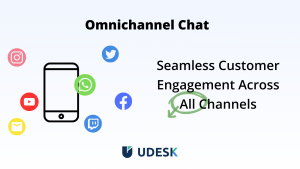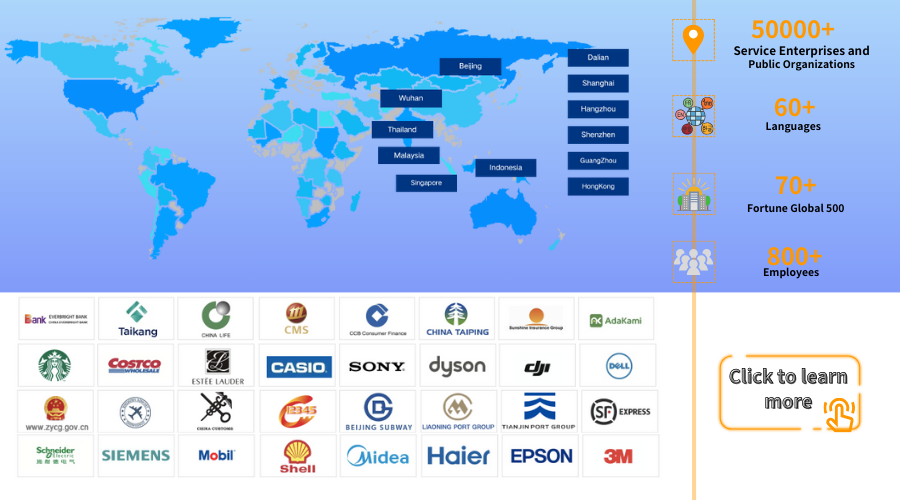What You Must Know About CX
Article Summary:In today's landscape, customers are no longer merely paying for a product or service; they are investing in an entire experience – from the initial encounter with a brand to the culmination of a transaction, and every subsequent interaction thereafter. Customer Experience has become the key indicator determining whether a business can thrive amidst fierce market competition. Whether you're a company leader or a manager within the customer service team, understanding the intricacies of customer experience is imperative.
Table of contents for this article
In today's landscape, customers are no longer merely paying for a product or service; they are investing in an entire experience – from the initial encounter with a brand to the culmination of a transaction, and every subsequent interaction thereafter. Customer Experience has become the key indicator determining whether a business can thrive amidst fierce market competition. Whether you're a company leader or a manager within the customer service team, understanding the intricacies of customer experience is imperative.
UX VS.CX

The terms User Experience (UX) and Customer Experience (CX) are often mistakenly thought to have the same meaning, but they have different emphases and scopes.
User Experience (UX) primarily focuses on the usage aspect of a product or service, encompassing all aspects of individual interaction with it. This includes user interface (UI), usability, interaction design, information architecture, content strategy, etc. UX is concerned with ensuring that users can efficiently, enjoyably, and seamlessly achieve their goals when using a product or service. For example, the UX design of a mobile application might consider factors such as the intuitiveness of app navigation, loading speed, and clarity of information display.
Customer Experience (CX), on the other hand, is broader in scope, encompassing the sum of all touchpoints between a customer and a company. This includes experiences from initial brand awareness, product understanding, the purchasing process, usage experience, post-sales service, and loyalty maintenance. CX not only involves the use of a product or service but also encompasses marketing, sales, customer service, logistics, brand image, and all other factors that influence customer perception. It focuses on the emotional responses, satisfaction, and loyalty of customers throughout the entire customer journey. For example, the CX of an online shopping experience involves not only website usability (UX) but also aspects such as product packaging, delivery speed, return policies, and responsiveness of customer service.
In summary, User Experience (UX) is an integral component of Customer Experience (CX), focusing on the direct user experience of a product or service, while Customer Experience (CX) is a more comprehensive concept, encompassing the aggregation of all experiences from brand awareness to becoming a loyal customer. In practical terms, excellent UX forms the foundation for good CX, but achieving outstanding CX requires integrating experiences across all customer touchpoints to ensure consistency and high quality
Elements of Customer Experience Strategy

A customer experience strategy should encompass all customer interactions and communication channels, including:
Traditional media messaging, such as publications, video and audio advertisements, and public relations.
Social media messaging – not only encompassing the company's own social media channels but also including customer opinions and comments on third-party blogs or websites.
Digital experiences such as corporate websites, mobile applications, chatbots, and e-commerce experiences.
Direct contact, including face-to-face interactions in retail environments and telephone contact with customer support and service teams.
Cross-channel messaging and experiences should be as consistent as possible, allowing potential and existing customers to seamlessly transition from one channel to another as if they are all part of the same experience. Wherever possible, customers should be able to accomplish as many objectives as possible on the channels of their choosing. For example, if they opt for customer support via social media instead of phone, or for purchasing through an app rather than an e-commerce site, they should be able to do so: regardless of the channel chosen by the customer, a satisfactory customer experience should be provided.
Customer Self-Service
FAQs and knowledge bases are just the beginning. Customer expectations continue to grow, including:
Ability to interact with customer service and support teams via online chat or text messaging.
Ability to schedule appointments using online tools (without needing to call).
Providing contextual information – such as product pages containing brochures, product manuals, detailed specifications, instructional videos, and other relevant information.
Optimizing search to enable customers to quickly find answers to their questions.
It's worth noting that customer self-service is an area where not all automation technologies are suitable. Customer experience teams must prioritize customer needs over flashy but impractical new technologies.
Personalized Experience

A personalized experience is an interaction, service, or product tailored to meet a customer's specific needs, requirements, objectives, preferences, or even individual personality. Examples of personalized experiences include (but are not limited to):
Web sites, applications, or chatbots that address customers by their names when greeting them.
Customer support handovers that do not require customers to repeat previously provided information.
Recommendations based on previous purchases (or watched videos).
Follow-up emails or messages after a purchase that provide product information, tips, or operational instructions.
Many personalized customer interactions require advanced technology such as advanced analytics, automation, and artificial intelligence. However, other interactions can be achieved with simpler technology.
Regardless of the implementation method, personalization is increasingly seen as a key factor in creating a positive customer experience.
Get Started with Udesk’s AI Solution for Free
The UDESK intelligent solution is comprehensive, spanning the entire product process. It excels in delivering excellent customer experiences across various stages.
From initial inquiry to post-purchase support, Udesk ensures a seamless journey for customers. Its versatility allows it to adapt and provide tailored assistance at every step.
Whether it's guiding prospects through product features or offering timely troubleshooting, Udesk excels in meeting diverse customer needs. Its integrated approach fosters satisfaction and loyalty throughout the customer lifecycle.
Get Started with Udesk’s AI Solution for Free.
》》Click to start your free trial of Udesk customer service solution, and experience the advantages firsthand.
The article is original by Udesk, and when reprinted, the source must be indicated:https://www.udeskglobal.com/blog/what-you-must-know-about-cx.html
customer service toolCXOmnichannel

 Customer Service& Support Blog
Customer Service& Support Blog



